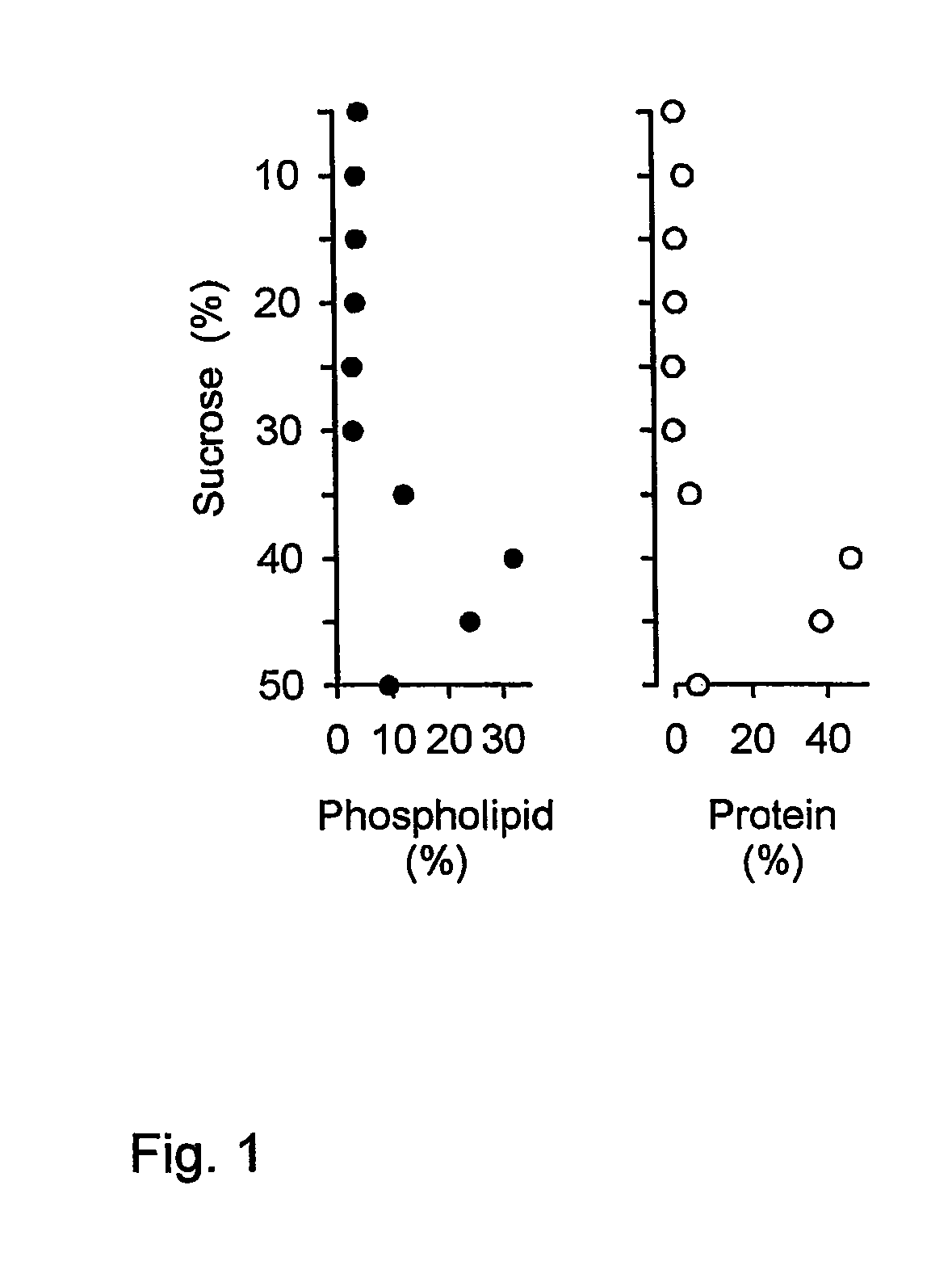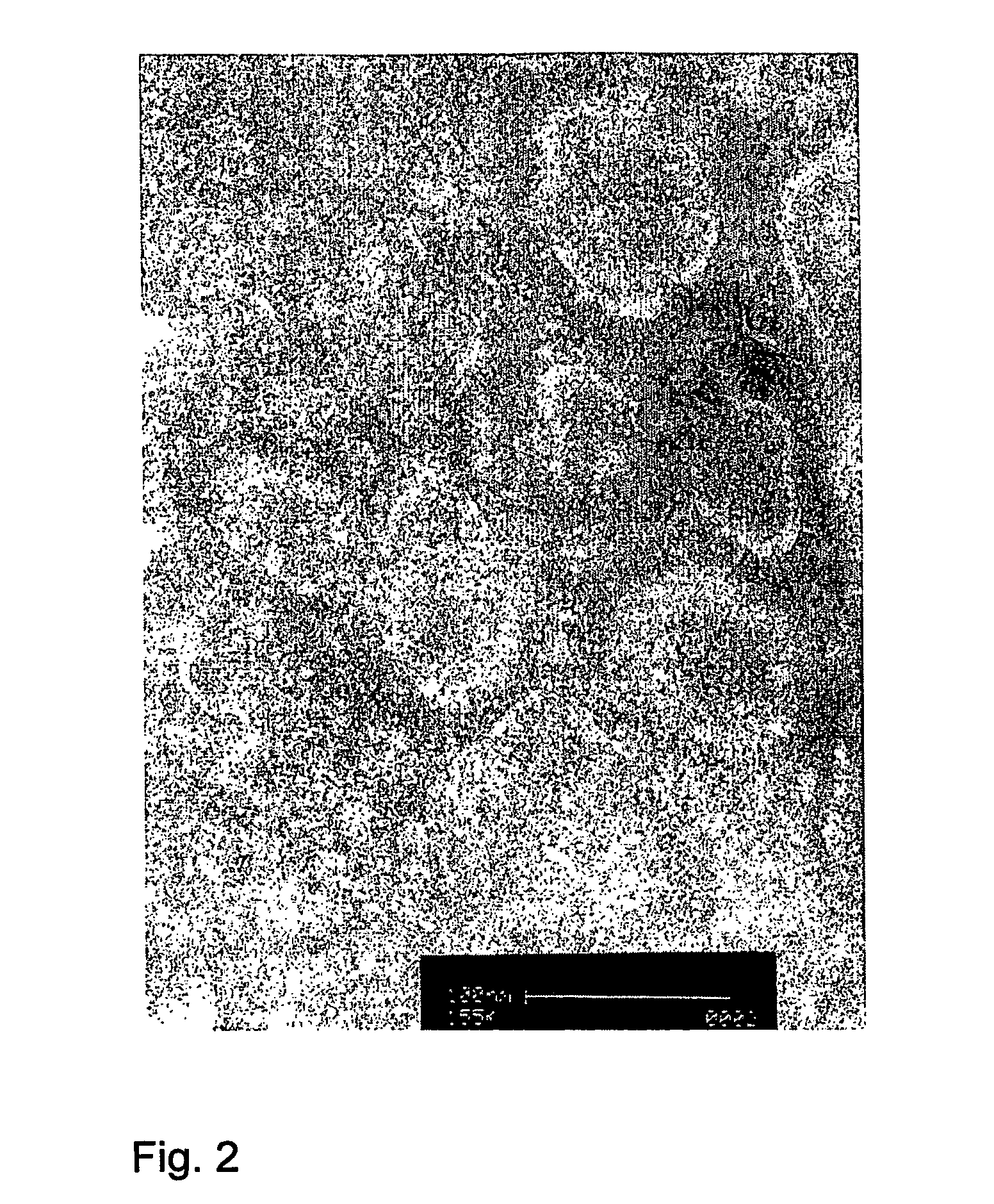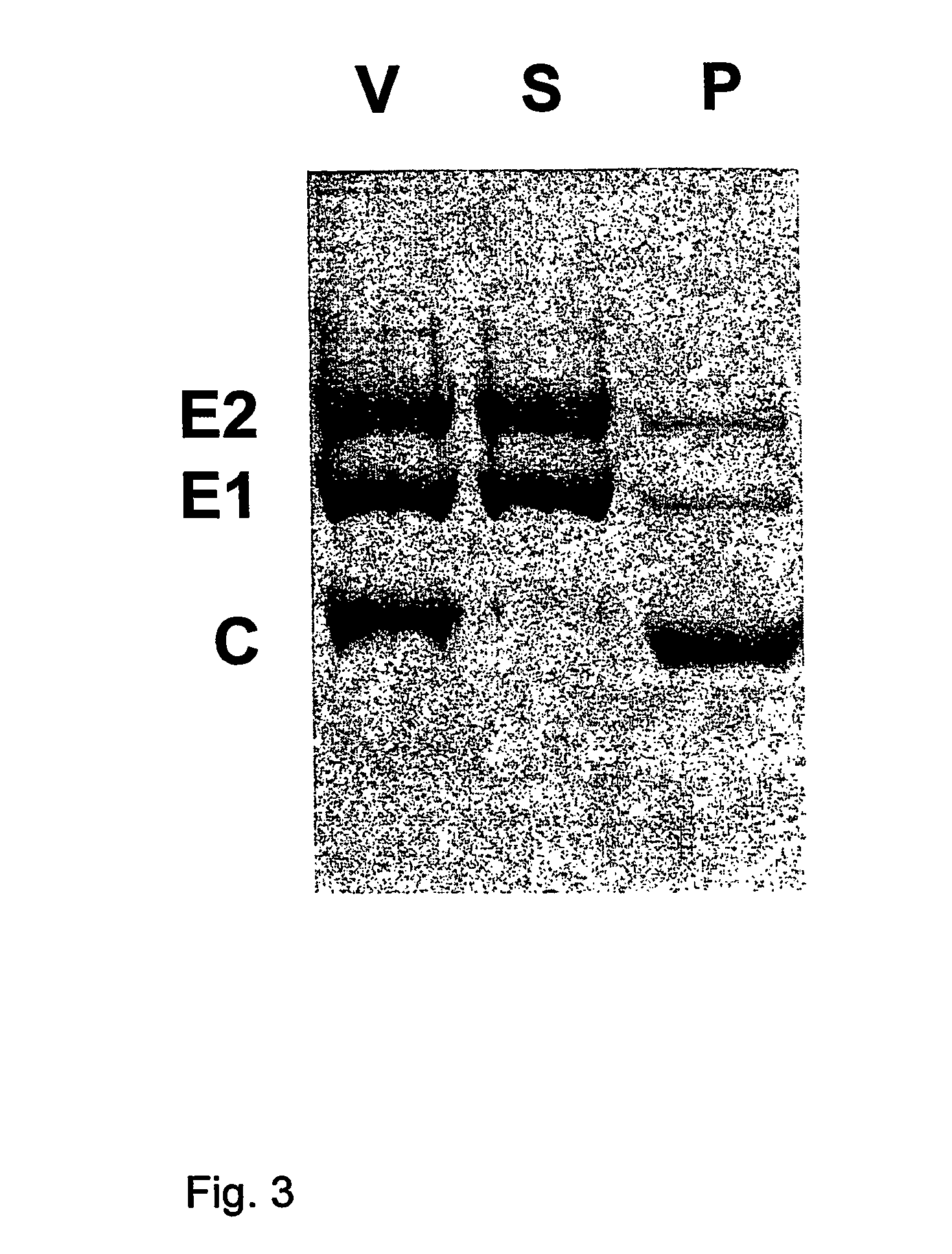Virosome-like-particles
- Summary
- Abstract
- Description
- Claims
- Application Information
AI Technical Summary
Benefits of technology
Problems solved by technology
Method used
Image
Examples
example 1
Preparation of a Virosome-Like-Particle Containing the Influenza Hemagglutinin Glycoprotein
[0037]Influenza virus was produced by growing virus acquired from the World Influenza Center or the American Type Tissue Culture Collection (ATCC, Rockville, Md.), using methods known to persons skilled in the art, for instance by growing the virus on embryonated eggs or in cultured cells such as PER.C6™ or MDCK cells. The virus was then purified, by density gradient ultracentrifugation, and may subsequently be inactivated by treatment with beta-propiolactone or formaldehyde according to established procedures. Inactivation is not required for this procedure, and may affect the immune response. The virus may be further purified by the resuspension of sedimented virus in 5.0 mM Hepes (pH 7.4), containing 0.15 mM NaCl and 0.1 mM EDTA (HNE-buffer), and loading this preparation atop linear 10-60% (w / v) sucrose gradients in HNE, centrifuging at 90,000×g for 36 hr at 4° C. Virus can be pooled and al...
example 2
Preparation of a Virosome-Like-Particle Containing the Semliki Forest Virus Spike Glycoproteins
[0043]Semliki Forest virus, obtained from sources such as the ATCC, was produced on cell lines known in the art such as baby hamster kidney cells (BHK-21, from the ATCC) according to methods known in the art [23]. These cells were grown in Glasgow minimum essential medium, supplemented with 10% tryptose phosphate broth, 2.0 mM L-glutamine and 10% fetal bovine serum (all from GibcoBRL Life Technologies Inc., Paisley, UK). The medium was clarified by low-speed centrifugation (1,000×g) at 4° C. for 10 min, and the virus was pelleted from clarified cell-culture medium by ultracentrifugation at 100,000×g. The virus was further purified by the resuspension of sedimented virus in 6.0 mM Hepes (pH 7.4), containing 0.15 mM NaCl and 0.1 mM EDTA (HNE-buffer), and loading this preparation atop linear 10-60% (w / v) sucrose gradients in HNE, centrifuging at 90,000×g for 36 hr at 4° C. Virus was pooled an...
example 3
Membrane Fusion Activity of Influenza Virosomes
[0046]For analysis of the membrane fusion activity of the a virosome preparation, the X-47 strain of influenza virus (0.25 μmol phospholipid) was first sedimented by ultracentrifugation, and subsequently resuspended with 0.55 ml HNE-buffer, containing 25 mM DCPC. After a 30 min incubation at 0° C., the viral membrane was solubilized, and the nucleocapsids were removed by centrifugation for 20 min at 100,000×g at 4° C. The supernatant was then added to a dried thin film of 10 nmol of (1-pyrenedecanoyl)-sn-phosphatidylcholine (pyrPC) (Molecular Probes, Leiden, The Netherlands). After incubation for 20 min at 4° C., virosome-like-particles were then formed from this mixture by dialysis as described above. For the measurement of membrane fusion, the resulting virosome-like-particles were mixed with erythrocyte ghosts, prepared as described previously [25] from human red blood cells, at neutral pH (pH 7.4) at 37° C. At time 0, the medium was...
PUM
| Property | Measurement | Unit |
|---|---|---|
| Amphiphilic | aaaaa | aaaaa |
| Pharmaceutically acceptable | aaaaa | aaaaa |
| Solution | aaaaa | aaaaa |
Abstract
Description
Claims
Application Information
 Login to View More
Login to View More - R&D
- Intellectual Property
- Life Sciences
- Materials
- Tech Scout
- Unparalleled Data Quality
- Higher Quality Content
- 60% Fewer Hallucinations
Browse by: Latest US Patents, China's latest patents, Technical Efficacy Thesaurus, Application Domain, Technology Topic, Popular Technical Reports.
© 2025 PatSnap. All rights reserved.Legal|Privacy policy|Modern Slavery Act Transparency Statement|Sitemap|About US| Contact US: help@patsnap.com



